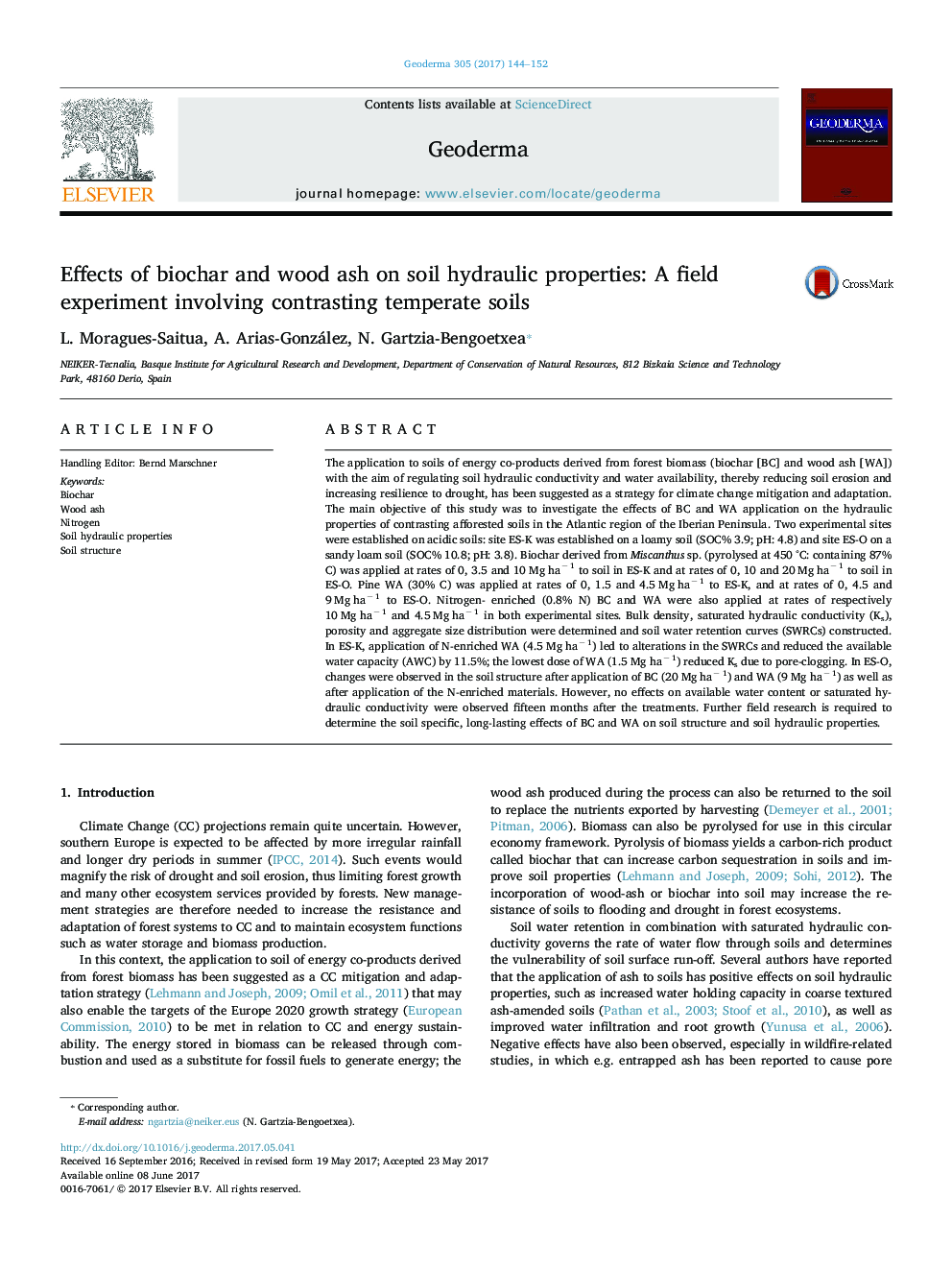| Article ID | Journal | Published Year | Pages | File Type |
|---|---|---|---|---|
| 5770284 | Geoderma | 2017 | 9 Pages |
â¢N-enriched biochar and wood ash altered the shape of SWRC of a Typic Udorthent.â¢Low dose of wood ash (1.5 Mg haâ 1) caused pore clogging in a Typic Udorthent.â¢Biochar at 20 Mg haâ 1 changed soil structure but not SWRC in a Typic Dystrudept.â¢Wood ash at 9 Mg haâ 1 changed soil structure and SWRC in a Typic Dystrudept.â¢Nitrogen effect in soil structure and hydraulic properties is soil specific.
The application to soils of energy co-products derived from forest biomass (biochar [BC] and wood ash [WA]) with the aim of regulating soil hydraulic conductivity and water availability, thereby reducing soil erosion and increasing resilience to drought, has been suggested as a strategy for climate change mitigation and adaptation. The main objective of this study was to investigate the effects of BC and WA application on the hydraulic properties of contrasting afforested soils in the Atlantic region of the Iberian Peninsula. Two experimental sites were established on acidic soils: site ES-K was established on a loamy soil (SOC% 3.9; pH: 4.8) and site ES-O on a sandy loam soil (SOC% 10.8; pH: 3.8). Biochar derived from Miscanthus sp. (pyrolysed at 450 °C: containing 87% C) was applied at rates of 0, 3.5 and 10 Mg haâ 1 to soil in ES-K and at rates of 0, 10 and 20 Mg haâ 1 to soil in ES-O. Pine WA (30% C) was applied at rates of 0, 1.5 and 4.5 Mg haâ 1 to ES-K, and at rates of 0, 4.5 and 9 Mg haâ 1 to ES-O. Nitrogen- enriched (0.8% N) BC and WA were also applied at rates of respectively 10 Mg haâ 1 and 4.5 Mg haâ 1 in both experimental sites. Bulk density, saturated hydraulic conductivity (Ks), porosity and aggregate size distribution were determined and soil water retention curves (SWRCs) constructed. In ES-K, application of N-enriched WA (4.5 Mg haâ 1) led to alterations in the SWRCs and reduced the available water capacity (AWC) by 11.5%; the lowest dose of WA (1.5 Mg haâ 1) reduced Ks due to pore-clogging. In ES-O, changes were observed in the soil structure after application of BC (20 Mg haâ 1) and WA (9 Mg haâ 1) as well as after application of the N-enriched materials. However, no effects on available water content or saturated hydraulic conductivity were observed fifteen months after the treatments. Further field research is required to determine the soil specific, long-lasting effects of BC and WA on soil structure and soil hydraulic properties.
